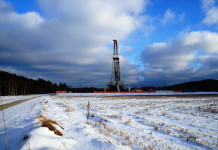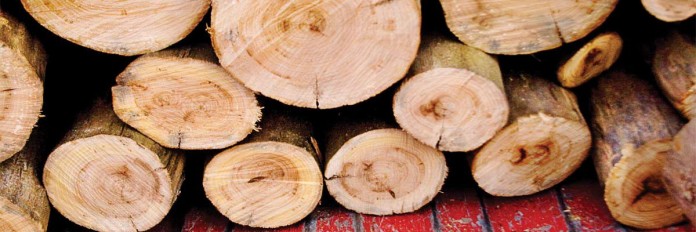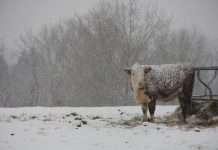As fall’s cool, crisp air settles in and the season changes to winter, a warm fire is a welcoming thought.
Fireplaces and wood stoves are an important, economical source of heat in many homes during the cooler months. If you’re using firewood to heat your home, you’ll want to keep a supply on hand, whether you purchase the firewood or cut it yourself. There’s much more to firewood than meets the eye, though.
Drying
Firewood needs to be dry before it is used. Cornell University Cooperative Extension,Tompkins County explains that firewood should be bought or cut a year before you intend to use it in order to ensure proper drying of the wood. The wood should also be stacked as soon as possible so that the logs can dry out.
Storage
In order to protect the wood you’ve cut or purchased, proper storage is necessary. Cornell University Cooperative Extension, Tompkins County recommends keeping wood off the ground helps it lose moisture and also prevents it from getting damp. There should be some space between logs so that air can get through. Storing wood in an area that is exposed to sunlight and wind is also a good idea so that the wood can dry more quickly.
Burning safety
Before putting wood on the fire, check to make sure that it is dry. Wood that is green or wet will not burn well and can become a fire hazard.
Wood stoves are designed for wood, not paper, trash, treated wood or any other products. Cornell University Cooperative Extension, Tompkins County recommends using hardwoods like oak, hickory and black locust. Small amounts of softwoods can also be used, such as poplar, aspen and spruce.
Michigan State University Extension offers information about the hazards of wood burning and how to take precautions while heating your home with a wood stove or fireplace.
Woodcutting Safety
If you’re cutting your own firewood, there are numerous safety precautions to take, including wearing protective gear, taking chainsaw safety courses and learning safe, effective ways to fell trees. Chris Kick explains the do’s and don’ts of chain saw operation and safety as well as simple ways to be proactive while cutting wood.













“Storing wood in an area that is exposed to sunlight and wind” – The problem with that is that depending on where the shelter is situated, the dew at night can render all drying efforts during daytime useless. Many people don’t really consider how much heat they lose due to the fact that the water/humidity still contained in the logs needs one way or another to come out. Since water is the liquid with the highest specific energy required t boil (!) which makes it so ideal for firebrigades, it also takes a large toll when not properly evaporated prior to burning wood. It is rather easy to find out the water content of your logs: weigh and then put one in an oven and dry at about 110 degrees centigrade (about 230 Fahrenheit). Weigh again after about an hour or two. The weight difference is about 95% or 98% of the water still contained in the log. therefore you should rather consider two years drying and the logs should not be stored where they can be affected by dew during the night (put a heavy metal object about a foot above the ground in the wood shed, then check on a night where the preceding day was rather humid – at around four o clock in the morning. You will see the metal object covered in water drops (like cars in the road early in the morning and then you’ll know that half of your efforts in drying on a hot day may be unravelled each following night!
Dew tell, Miss Maureen! Thank you.
good point. I never really thought about the dew.
Get that H2O outta the firewood.
Thanks for sharing tips for choosing the right firewood. I read your article and it fully informative. It helps to choose the right firewood. Although I bought some firewood from kamil siwarga wood ltd and they provide me the best firewood.